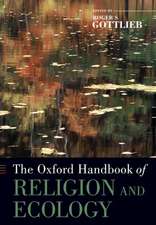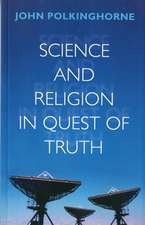In Quest of Freedom: Religion, Theologie und Naturwissenschaft, cartea Band 013
Autor Philip Clayton Editat de Michael G. Parker, Thomas M. Schmidten Limba Engleză Hardback – 31 oct 2008
Preț: 339.97 lei
Preț vechi: 371.24 lei
-8% Nou
Puncte Express: 510
Preț estimativ în valută:
65.06€ • 67.67$ • 53.71£
65.06€ • 67.67$ • 53.71£
Carte disponibilă
Livrare economică 25 martie-08 aprilie
Preluare comenzi: 021 569.72.76
Specificații
ISBN-13: 9783525569863
ISBN-10: 3525569866
Pagini: 178
Ilustrații: mit 12 Abbildungen
Dimensiuni: 160 x 236 x 15 mm
Greutate: 0.41 kg
Editura: Vandehoeck & Rupprecht
Seriile Religion, Theologie und Naturwissenschaft, Religion, Theologie Und Naturwissenschaft/Religion, Theology, And Natural Science
ISBN-10: 3525569866
Pagini: 178
Ilustrații: mit 12 Abbildungen
Dimensiuni: 160 x 236 x 15 mm
Greutate: 0.41 kg
Editura: Vandehoeck & Rupprecht
Seriile Religion, Theologie und Naturwissenschaft, Religion, Theologie Und Naturwissenschaft/Religion, Theology, And Natural Science
Notă biografică
Philip Clayton, PhD, ist Ingraham Professor an der Claremont School of Theology und Professor für Philosophie und Religion an der Claremont Graduate University.
Cuprins
AcknowledgementsIntroductionChapter 1: The Age of Neuroscience and the End of Freedom?The Data on Neural Correlates of Consciousness - A Neuroscientific Theory of Cognition: The Global Workspace Model - The Burden of Proof and the Loss of Innocence - Have We Lost All Conscious Control? - Do We Now Need a Revised View of the Person? - Drawing Conclusions - A More Radical Entailment? - What Comes NextChapter 2. Growing Freedom? Complexity, Spontaneity, and Social Behaviors in Biological EvolutionIntroduction - Studying the Evolution of Biological Novelty - The Means of Complexification in Natural History - The Emergence of Species - From Sociality to Culture - Culture as a New Type of Evolutionary Dynamic - First ConclusionsChapter 3. Co-evolution, Mental Causality, and Human Action: Freedom and the Emergence of CultureIntroduction - The Architectonic of the Argument - Learning and Culture - Co-evolution - What is Right, and what Wrong, about Evolutionary Psychology? - The Self, Sociality, and Cognition - The Biological Birth of Spirit - Toward a "Gradualist" Theory of FreedomChapter 4. Forms of Freedom, As-If Freedom, and Asymptotic Freedom: A Challenge to NeurophilosophyKant and Compatibilism: The Last Word on Freedom? - Is Spontaneous Agency Sufficient for Freedom? - Agential Actions and Self-Determination - Incompatible but not Counterfactual: Conceptual Parameters for Talk of Freedom - The Doctrine of Gradual or Asymptotic Freedom - An Epistemological Aside - Transcendental Freedom - Freedom and Being Responsible for One's Past - The Unexplored Option: Openings toward a Philosophy of NatureChapter 5. On Religion: A Speech to its Scientifically Cultured DespisersThe Theme of Freedom - To the Cultured Scientific Despisers of Religion - In-built Dangers in the "Science of Religion" - The Sciences - Schleiermacher and Theology - What Is the Religious Vision? - ConclusionChapter 6. Freedom and TranscendenceFreedom and the "More Than" of Human Action - Excursus: From Regulative to Constitutive - Imago Dei Correlations - Two Modes of Self-Transcendence - Freedom, Ground, and the Emergence of Spirit - Freedom and Anthropology - The Unity of the Person, Moral Responsibility, and the "Basic Orientation" - Retrospective and ConclusionsIndexList of Figures





























